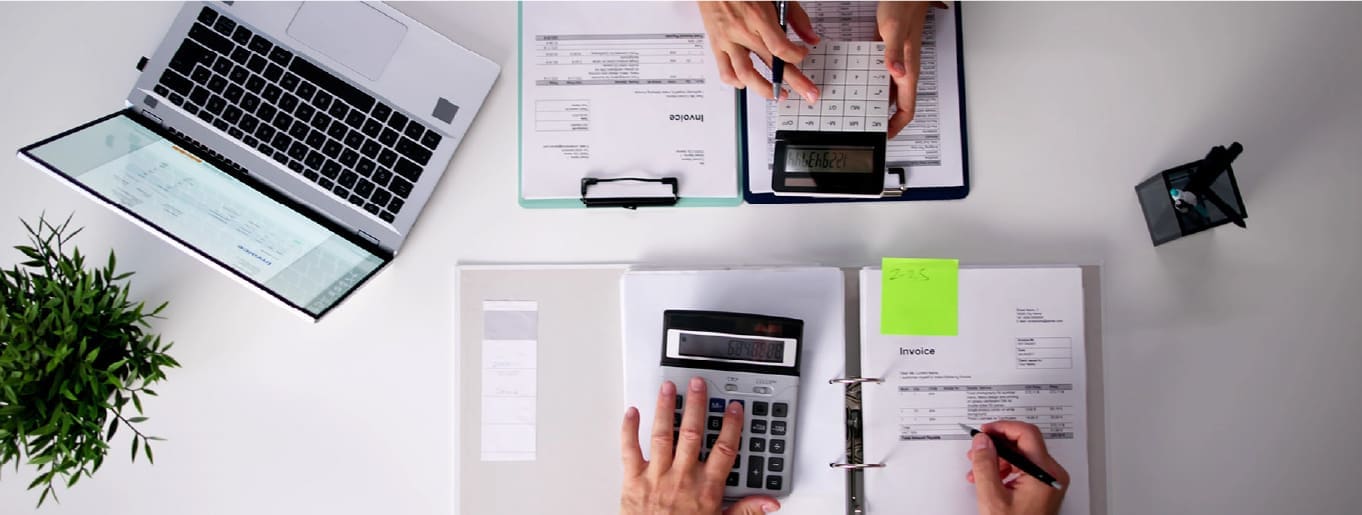Faster, smarter, and easier AR payment collection
Corcentric

Sales increased 240%
Disputes diminished to < 0.4%
DSO reduced from 37 days to 15
Do we have your attention?
As compelling as it is, this is not a case study review of the outstanding payment collection and other results achieved by Corcentric customer Daimler Truck North America ─ you can read that here if you want to dig in. These stats are simply to underscore the possibilities achievable when accounts receivable (AR) teams optimize payment collection. The potential is enormous.
What follows are some strategies, practices, and tools that companies can leverage in the effort to streamline the “cash” portion of your order-to-cash process. Which, done right, can help optimize the “order” side of things as well, like it did for Daimler.
Money (that’s not all I want)
Having on-point AR payment collection is crucial for maintaining healthy cash flow, ensuring day-to-day operations, funding growth initiatives, and maintaining overall financial health, for starters. It can also:
- Reduce Days Sales Outstanding (DSO) ─ a primary goal of AR optimization. A lower DSO means faster payment collection, improving cash flow, and reducing the need for external financing. This improvement in cash flow predictability allows for more accurate financial forecasts and better resource management.
- Minimize bad debt and write-offs ─ another crucial advantage. Effective collection strategies and monitoring of customer payment behaviors help identify potential issues early, protecting the bottom line and maintaining financial statement integrity.
- Enhance customer relationships, increase operational efficiency, and empower more informed financial decision-making ─ improvements that help drive innovation, growth, and agility within the organization.
Common challenges in AR payment collection
Before diving into optimization strategies, let’s lay out some common AR payment collection challenges. These obstacles can turn into serious setbacks for a company’s financial health and operational efficiency if not addressed properly:
- Manual processes often lie at the root of many AR challenges. Time-consuming and error-prone tasks such as data entry, invoice generation, and payment reconciliation can grind down the entire AR cycle. These manual processes not only increase the risk of errors but also consume valuable time that could be spent on more strategic activities.
- Inconsistent collection practices and poor visibility are other efficiency killers. Without standardized procedures and real-time insights, it becomes difficult ─ or impossible ─ to track performance, identify areas for improvement, and make informed decisions about cash flow management.
- Complex payment terms and customer disputes add further unnecessary complications. Standardization and automation are key. Managing diverse terms manually is overwhelming, while dispute resolution significantly delays payments and strains customer relationships.
- Limited payment options are like asking customers to pay late. They expect the same convenience and flexibility in how they make B2B payments as they have in the consumer world. Open up the options and eliminate the payment collection roadblocks.
Best practices for optimizing AR payment collection
- Implement AR automation tools
AR automation plays a crucial role in streamlining payment collection. These sophisticated systems leverage technology to transform traditionally manual and time-consuming tasks into efficient, frictionless processes.
Key features of AR automation tools include:
- Automated invoice generation and delivery
- Timely payment reminders
- Real-time visibility into AR operations
- Faster cash application
- Detailed reporting and analytics
Automation can significantly reduce or even eliminate manual workloads, minimize errors, and accelerate the entire collection process. This not only improves operational efficiency but also frees up valuable resources to focus on strategic financial management and customer relationship building.
- Offer diverse payment options
Providing customers with multiple payment options can greatly improve collection rates by catering to different preferences and capabilities. In today’s diverse business landscape, offering a range of payment methods is not just a convenience; it’s a necessity for maintaining competitiveness and ensuring prompt payments. Think about how your AP department pays your suppliers.
Consider implementing as many payment acceptance options as is practical:
- Electronic funds transfers (EFT)
- Credit card payments
- Virtual cards
- ACH transfers
- Online payment portals
- Mobile payment solutions
- Digital wallets & cryptocurrencies
When implementing diverse payment options, it’s crucial to consider the security and compliance aspects of each method. Ensure that all payment channels adhere to relevant data protection regulations and industry standards to protect both your business and your customers.
- Implement a clear credit policy
Basic, yes, but don’t overlook your credit policy when optimizing AR payment collection. It serves as a guideline for the how/what/when/why of extending credit to customers, managing credit risks, and handling collections. Ultimately, your credit policy helps mitigate financial risks while maximizing relationships.
Key components of a solid credit policy include:
- Credit approval processes
- Credit limits
- Payment terms
- Late payment penalties
- Collection procedures
Remember, it’s not a static document. Regular review and updating ensures it remains relevant and effective. This review should consider changes in the business environment, shifts in customer payment behaviors, and the company’s evolving risk tolerance.
- Not all customers are created equal
A harsh but true reality, which is why customer segmentation makes for a powerful strategy when optimizing AR processes. In terms of customer payment behavior and business value, tailoring your collection strategies allows you to allocate resources more effectively and achieve faster results.
Consider the following factors when segmenting customers:
- Payment history
- Credit risk
- Invoice value
- Strategic importance
- Industry or business type
Once customers are segmented, develop tailored strategies for each group. In its most simplistic form, this would be something like giving high-value, low-risk customers preferential treatment, while high-risk customers could be subject to more frequent credit reviews and stricter payment monitoring.
- Utilize early payment incentives
They work for your AP team, so they’ll probably work for you. Offering early payment incentives is a powerful psychological motivator that can prompt customers to prioritize their invoices (yours) so you get paid faster, accelerating cash flow, reducing DSO, and improving AR performance.
Consider implementing the following incentives:
- Discounts for early payment
- Loyalty programs tied to payment behavior
- Preferential terms for consistent on-time payers
- Dynamic discounting options
Whichever, if any, of these you implement, be clear when communicating the terms and conditions to customers. In fact, state the T&Cs on invoices and other customer communications. Regularly analyze effectiveness and adjust as needed to maximize the uptake – and impact on cash flow and customer relationships.
Fast forward: Coming trends in payment collection
Driven by technological advancements and changing customer expectations, the payment collection landscape is constantly shifting. Not falling behind in best-practice financial management means being aware of what lies ahead.
Key trends shaping the future of payment collection include:
- Artificial intelligence (AI) and machine learning (ML): These technologies are being used to predict payment behaviors, automate cash application, and provide intelligent insights for decision-making.
- Blockchain technology: Blockchain has the potential to revolutionize payment processing by providing secure, transparent, and near-instantaneous transactions.
- Real-time payments: The move towards real-time payment systems is accelerating, allowing for faster settlement of transactions and improved cash flow management.
- Advanced analytics: Predictive and prescriptive analytics are becoming more sophisticated, enabling businesses to anticipate cash flow issues and take proactive measures.
- Mobile-first solutions: As workforces become ever more remote and dispersed, AR solutions are adapting to provide mobile-friendly interfaces for both businesses and customers.
As these and newer, as-yet-unknown technologies continue to develop, businesses that adopt them will be better-positioned in terms of AR optimization, improved customer satisfaction, and competitive advantage.
How Corcentric optimizes AR management
Corcentric offers comprehensive AR management solutions designed to optimize the entire order-to-cash cycle, beyond just payment collection. Just ask Daimler Trucks. Our software, Managed AR, and consulting solutions directly address the common AR management challenges businesses face, enabling them to implement the best practices discussed above.
Standout features include:
- Automated invoicing: The system automates invoice creation, validation, presentment, and distribution, improving accuracy and efficiency.
- Guaranteed DSO reduction: Corcentric offers fixed and guaranteed Days Sales Outstanding (DSO) on all receivables, allowing businesses to choose when they want to be paid – 5, 15, or 30 days earlier than usual terms.
- Cash application management: We handle all aspects of cash application, including invoice matching, remittance, and reconciliation, simplifying the payment process.
- Collections management: The solution manages collections proactively, preserving customer relationships while effectively handling delinquent accounts.
- Self-service customer portal: A branded portal allows customers to review invoices, approve payments, and manage disputes, enhancing the overall experience.
- Bad debt elimination: Through Managed AR, we assume collections risk by ensuring timely payment for all customer invoices, eliminating bad debt and credit risk.
- Working capital optimization: We can unlock the working capital trapped in AR ledgers, converting it to cash on the balance sheet for improved liquidity.
- Existing systems integration: AR automation integrates with existing accounting software and ERPs, reducing reliance on manual processes.
- Real-time analytics and reporting: The system provides dashboards and reporting capabilities to improve cash position forecasting and support more effective collections management.
- Multiple payment options: We support myriad payment methods, ensuring you benefit from the fastest resolution possible.
When discussing optimization, it’s worth calling out Corcentric Managed AR. From invoice creation to collections, our combination of people, processes, and technology accelerates cash flow, reduces DSO, and eliminates bad debt risk, all without upfront costs. It’s AR transformation that pays for itself.
Take your payment collection from overdue to overachiever
Optimizing AR payment collection is essential for maintaining healthy cash flow and supporting business growth. By implementing best practices, continuously honing your strategy approach and, where necessary, working with an experienced partner, your company will be better positioned to seize opportunities, weather downturns, and stay competitive.
If you’re ready to drive AR metrics like Daimler, let Corcentric show you the faster, smarter, easier way to optimize.
